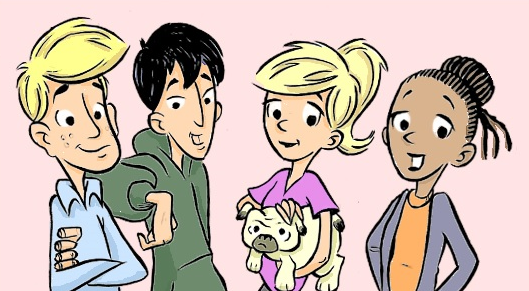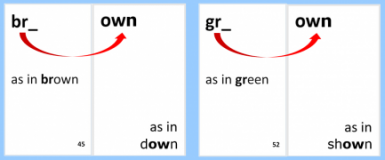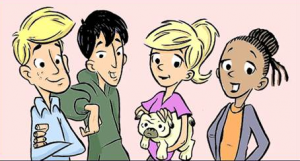Decodables Criteria
Reading specialists and reading intervention teachers have long advocated the use of decodable text for struggling, vulnerable readers… especially those in upper elementary, middle or high school, ESL/ELL, special education, and adult literacy classes. Teachers of beginning reading have either favored decodables, leveled readers, or predictable text.
I’m going to present the argument and criteria for decodables. (Full disclosure, I’m the author of a set of decodable readers for older students which I will use to apply the criteria for effective decodables and will promo at the end of the article.) My take is that it seems like common sense that if we are going to teach decoding (phonics) and encoding (spelling), our students should practice these skills in the context of authentic text. However, many have argued that decodable are anything but authentic, in that they are written for a contrived purpose. Additionally, we all know that common sense is often a poor substitute for evidence-based practices. Unfortunately, the reading research on decodables is quite minimal, according to noted reading researcher, Dr. Tim Shanahan. Shanahan comments:
There have been only a handful of studies into the effectiveness of decodable texts since the term was first used back in the 1980s. And, truth be told, they are kind of mess; with little evident agreement about what decodable text is, what it should be compared with, and what outcomes we should expect to derive from it (https://shanahanonliteracy.com/blog/should-we-teach-with-decodable-text
So, in the “handful of studies” mentioned above, are decodables effective or ineffective? How so relative to other forms of text, such as leveled readers with controlled vocabulary, predictable texts etc.?
Shanahan again:
Mesmer (2005) found that kids were more likely to try to decode decodable text (duh), but leveled texts (less decodable) led to greater fluency (Mesmer, 2010). Some studies (Cheatham & Allor, 2012; Compton, 2005) concur with the first Mesmer study, but that’s okay because others support the second (Priec-Mohr & Price, 2017). And, then there are those with mixed results (Chu & Chen, 2014).
Regarding the effectiveness of decodables versus other text constructions, the Ohio Department of Education produced a helpful list and example slides of pros and cons for decodables, leveled readers, and predictable text readers. Note that the advantage of decodables seems clear to me (and them) in their presentation:
http://education.ohio.gov/getattachment/Topics/Learning-in-Ohio/Literacy/Striving-Readers-Comprehensive-Literacy-Grant/Literacy-Academy/1-05-Matching-Text-Types-to-Students-Part-2.pdf.aspx?lang=en-US
Design and Instructional Component Criteria
As mentioned above, I’ll use my own decodable series to exemplify what I consider to be appropriate criteria for decodables for older readers.

Sam and Friends Phonics Books
- The Sam and Friends Phonics Books consist of highly decodable and systematic text to help readers learn, practice, and develop reliance upon the alphabetic code. Decodable means that a high percentage of words will be phonetically regular. Systematic means that each reader includes and reinforces only previously introduced sound-spellings to scaffold instruction.
- Each of the 54 books introduces the focus sound-spellings and 2 Heart Words of the daily Blending, Segmenting, and Spelling activity in the author’s two reading intervention programs:
- The books use the most widely-accepted, research-based instructional phonics sequence.
- Each book introduces two high-utility Heart Words (high frequency words with one or more phonetically irregular sound-spellings).
- The language de-emphasizes idiomatic expressions (ideal for English-language learners).
- The stories use non-predictable, non-repetitious, and non-patterned language to minimize over-reliance upon context clues and knowledge of text structure.
- The SCRIP comprehension strategies (Summary, Connect, Re-think, Interpret, Predict) are embedded within the text pages, not at the end of the book, to promote reader-author conversations and internal monitoring of text. Many require higher order thinking skills. The books include five higher level comprehension questions for each story.
- The back page includes 30 second word fluency practice on the focus sound-spellings and sight words with a systematic review of previously introduced sound-spellings and
- Heart Words
- Each book consists of eight pages in 5.5 x 8.5-inch booklet form. Books are formatted to be copied back to back on two separate 8.5 x 11 pages for easy copying and collation. Just one fold creates the take-home books. Staple if desired.
- The books are also formatted for tablet, Chromebook, and phone display.
- The books are also available as Google slides with comment or question text boxes for interactive monitoring of the text.
- Collections A, B, C, D, and E focus on remedial sound-spellings and sight words; whereas, Collection F: Syllable Juncture and Derivational Influences Books 45-54 is appropriate for all students reading below grade level.
- The books have been designed with older students (grades 4 to adult) in mind. Students will enjoy reading about the adventures of Sam and his friends: Tom, Kit, and Deb. Oh, and also Sam’s dog, Pug.
- The plots for each self-contained story reinforce positive values and character development and feature multi-ethnic teenage characters.
- Each book is cleverly illustrated by master cartoonist, David Rickert. The illustrations do not explain the text. They entertain.
Your students will love these decodables for older readers: the Sam and Friends Phonics Books, and more importantly, by using these readers, students and parents will see measurable progress in their reading skills. If interested in the characters, settings, and themes of the books, check out this sister article: Decodables for Big Kids.

The Science of Reading Intervention Program
The Science of Reading Intervention Program: Word Recognition includes explicit, scripted instruction and practice with the 5 Daily Google Slide Activities every reading intervention student needs: 1. Phonemic Awareness and Morphology 2. Blending, Segmenting, and Spelling 3. Sounds and Spellings (including handwriting) 4. Heart Words Practice 5. Sam and Friends Phonics Books (decodables). Plus, digital and printable sound wall cards and speech articulation songs. Print versions are available for all activities. First Half of the Year Program (55 minutes-per-day, 18 weeks)
The Science of Reading Intervention Program: Language Comprehension resources are designed for students who have completed the word recognition program or have demonstrated basic mastery of the alphabetic code and can read with some degree of fluency. The program features the 5 Weekly Language Comprehension Activities: 1. Background Knowledge Mentor Texts 2. Academic Language, Greek and Latin Morphology, Figures of Speech, Connotations, Multiple Meaning Words 3. Syntax in Reading 4. Reading Comprehension Strategies 5. Literacy Knowledge (Narrative and Expository). Second Half of the Year Program (30 minutes-per-day, 18 weeks)
The Science of Reading Intervention Program: Assessment-based Instruction provides diagnostically-based “second chance” instructional resources. The program includes 13 comprehensive assessments and matching instructional resources to fill in the yet-to-be-mastered gaps in phonemic awareness, alphabetic awareness, phonics, fluency (with YouTube modeled readings), Heart Words and Phonics Games, spelling patterns, grammar, usage, and mechanics, syllabication and morphology, executive function shills. Second Half of the Year Program (25 minutes-per-day, 18 weeks)
The Science of Reading Intervention Program BUNDLE includes all 3 program components for the comprehensive, state-of-the-art (and science) grades 4-adult full-year program. Scripted, easy-to-teach, no prep, no need for time-consuming (albeit valuable) LETRS training or O-G certification… Learn as you teach and get results NOW for your students. Print to speech with plenty of speech to print instructional components.
 The Sam and Friends Phonics Books have been designed to support systematic and explicit phonics instruction, such as is included in the author’s comprehensive
The Sam and Friends Phonics Books have been designed to support systematic and explicit phonics instruction, such as is included in the author’s comprehensive 







